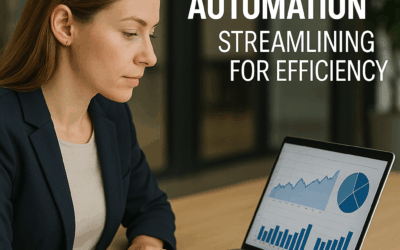If you’re an entrepreneur or small business owner, every advertising dollar counts. In today’s competitive digital landscape, Facebook Ads serve as one of the most powerful tools to help you connect with potential customers. This comprehensive guide shows you how to define your target audience for Facebook Ads and implement proven audience segmentation strategies to maximize your campaign’s success.
Understanding Your Target Audience
The key to a successful marketing campaign is truly knowing your audience. To define your target audience for Facebook Ads, start by identifying your ideal customers. If your product or service caters to a niche market, you’re already on the right track. However, if your offering appeals to a broader group, it may be necessary to break this group into smaller, more targeted segments.
Begin by analyzing your existing customer base. Identify common characteristics such as age, gender, location, and income. Beyond these demographics, explore psychographics like interests, habits, hobbies, and challenges. This in-depth approach not only enhances your messaging but also ensures your Facebook advertising dollars are invested in reaching those most likely to convert.
Building a Detailed Customer Persona
One of the best ways to gain insights into your market is by developing a detailed customer persona. A persona is a fictional yet data-driven representation of your ideal customer. Consider incorporating factors such as:
- Age range
- Interests and hobbies
- Online behavior and platform usage
- Pain points and challenges
For example, if you manage a boutique fitness studio, your target audience may include busy professionals looking for time-efficient workout solutions. A clear persona enables you to craft compelling messages and promotional content that highlight the specific benefits your service offers. Additionally, defining your target audience for Facebook Ads in this structured way simplifies your communication strategy.
Consider leveraging tools like Facebook Audience Insights to deepen your understanding. This tool offers valuable data directly from Facebook, allowing you to identify broader trends and refine your customer personas over time.
Leveraging Segmentation Strategies to Increase Ad Effectiveness
With a clear picture of your ideal customer in place, it’s time to implement segmentation strategies. Facebook Ads audience segmentation allows you to tailor campaigns for different groups based on nuanced characteristics. Instead of a one-size-fits-all approach, segmented advertising lets you create customized ad variations that speak directly to each subgroup.
For instance, when promoting a new product, you might highlight features like affordability for one segment and performance or innovative design for another. With Facebook’s detailed targeting options, you can specify criteria such as interests, demographics, and behaviors, ensuring that your ads reach an audience that genuinely resonates with your message.
Many small business owners have seen significant improvements in ad performance by testing and optimizing segmented campaigns. As industry experts note, refining your target audience based on performance metrics can lead to even better results over time. Successful targeting is an iterative process that thrives on continuous learning and adjustment.
Best Practices for Reaching Your Target Audience with Facebook Advertising
Reaching your target audience with Facebook Ads involves more than selecting the right audience—it’s also about crafting compelling ad content and choosing the appropriate formats. Consider these best practices:
Create Engaging, Relevant Content
Your ad content should capture attention instantly. Use clear visuals, concise text, and a strong call-to-action. When your message aligns with your audience’s interests and values, your engagement rates will soar. Use language that addresses the challenges and aspirations of your potential customers.
Test and Optimize Regularly
Facebook’s ad platform provides detailed feedback on your campaign performance. Embrace A/B testing for different headlines, visuals, and calls-to-action. Even a small change can significantly boost your click-through rates. Monitor your performance metrics closely, and adjust your strategy accordingly for improved ROI.
For example, if a particular segment responds better to video content over static images, allocate more budget towards video ads for that group. This ongoing process of testing and optimization ensures higher engagement and better returns.
Utilize Advanced Tools and Resources
Enhance your Facebook advertising efforts with additional digital marketing tools and insights. Explore resources offered by reputable digital marketing experts, such as those available on MakeBusiness. These insights can help you extend your digital presence beyond Facebook Ads.
Additionally, the Facebook pixel is a powerful tool for gathering data about user behavior on your website. By leveraging this data for retargeting, you can create custom or lookalike audiences, ensuring that you reach potential customers who have already shown an interest in your products or services.
As you refine your targeting strategy, focus on creating a genuine dialogue with your audience. Make sure your ads not only inform but also invite engagement. Authentic, relevant messages encourage potential customers to take action.
In today’s dynamic digital marketplace, staying ahead requires adaptability. The strategies that work today might need adjustment tomorrow as audience behaviors and preferences change. Continuous learning, experimentation, and data-driven insights are key to maintaining success in Facebook advertising.
By employing these strategic segmentation techniques and optimizing your targeting efforts, you can drastically improve your Facebook ad campaigns. This approach ensures that every advertising euro is wisely invested in reaching the people who matter most to your business.
- Analyze demographic and behavioral profiles to understand your ideal customer.
- Develop detailed customer personas for more targeted Facebook Ads messaging.
- Implement segmentation strategies to tailor ad campaigns to different audience groups.
- Continuously test, analyze, and optimize your ads for higher engagement and ROI.









